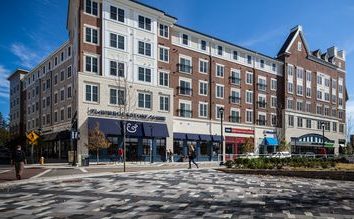By Sophia Scorziello
While Mansfield works to meet Connecticut’s affordable housing minimum and expand multi-family housing in town, the University of Connecticut strives to maintain its number of undergraduates living on campus. These goals have created somewhat of a catch-22 and in an attempt to solve it, UConn has vowed to prevent the connection of their sewer systems to any new development of “high-density student housing.”
A short letter sent to Mansfield on Oct. 17, 2019 from UConn’s Executive Vice President for Administration Scott Jordan stated the university’s opposition to new multi-family housing developments. Multi-family housing is the term Mansfield has been using rather than “high-density student housing.”
It also stated they will prevent the connection of their sewer system under the 2017 Sewer Server Agreement between UConn and Mansfield, which gives each entity control of their sewer systems.
On Feb. 10, Mansfield’s town council made a unanimous decision to send a letter written by Mansfield Mayor Antonia Moran to UConn’s President Thomas Katsouleas in response. They have decided to respond to UConn’s letter by seeking compromise.
“I am hopeful that we can once again find common ground to address this issue in a manner that benefits both the town and the university. For that to be possible, it is imperative that both organizations understand the challenges faced by each other,” Moran wrote.
While Moran and the council seek compromise, UConn’s letter did not express much leeway for this.
“The University will continue to oppose this type of development, and respectfully requests the Town to be mindful of the University’s position when the town considers sewer connection requests for the same,” Jordan wrote.
In five brief points, Jordan expressed the detrimental effects they believe these developments would have on the university. “A reduction in students living on campus will reduce revenue to the university, negatively impacting our ability to carry out our mission,” Jordan wrote in one point.
He admitted that they “project flat student enrollment in the foreseeable future,” meaning any students who choose to live off-campus won’t be replenished by an enrollment increase which would lower the university’s housing income.
Jordan also wrote that off-campus housing would prevent students from integrating into UConn, and that students who live on campus “can have better educational outcomes” compared to those who don’t.
All first-year students, including transfer students, are required by UConn to live on campus for that first year in Storrs. The requirement allows each student to get involved and find their place in the university. After that, it’s to the students’ discretion whether they want to return to on-campus housing the following year.
While the October letter defined the developments that they oppose as specifically student housing, Moran believed that the university has “stated unequivocally that they consider any housing development off-campus to be essentially student housing,” as she said in a Jan.13 town council meeting.
Still, density is something that has been deemed important in developing housing in Mansfield.
“You need density and you need government regulation that requires affordable housing development, both of which we have, both of which the university is opposing,” said town council member Ben Shaiken at the January meeting.
The need for both density and affordable housing is outlined in “Mansfield Tomorrow: Plan of Conservation and Development,” a plan created in 2015 that looks to progress Mansfield through environmental, housing, community and infrastructure improvements. This plan builds off previous plans from 2006 and 2008.
According to the plan, Mansfield’s rental housing market as of 2015, “is more costly in relation to median incomes than the for-sale market because of the pressure from student demand.”
The housing element of “Mansfield Tomorrow” includes plans to develop low to moderate-income housing, making it more affordable for families whose income falls at or below the poverty line.
Mayor Moran’s letter emphasized this need for affordable diversified housing to support both the large student population as well as the town’s aging population and Mansfield’s need for more taxable properties to compensate for a deficiency in PILOT (payment in lieu of taxes) grants, which are given to the town to make up for the taxes that the university is exempt from.
The six-page letter also mentioned the town’s concern over UConn students living in single-family homes, which has caused disruption for many families and neighborhoods in Mansfield. While Uconn’s letter stated that alternative housing would not stop students from living in single-family houses, Moran wrote that this is “contrary to the recommendations developed by the Town’s Ad Hoc Committee on Rental Regulations and Enforcement.”
In her closing section titled “Finding Common Ground,” Moran bulleted a list of potential compromises for the university and the Town, including lobbying for better funding for both parties and creating retirement communities for UConn alumni.
At the January meeting, Carrington also expressed how both the university and the town are experiencing unexpected adversity that puts them in like positions.
“They need the housing on campus to bring in money,” he said. “If they lose that, then they either have to cut services that they may provide outside the boundaries, or they may have to raise tuition.” If tuition were to increase, causing student enrollment to decrease, the market for new housing developments in town would also suffer.
Carrington called this interdependence between UConn and Mansfield “a vicious circle.” As both are forced to face unexpected realities, he and the council believe it’s beneficial they work in tangent.


